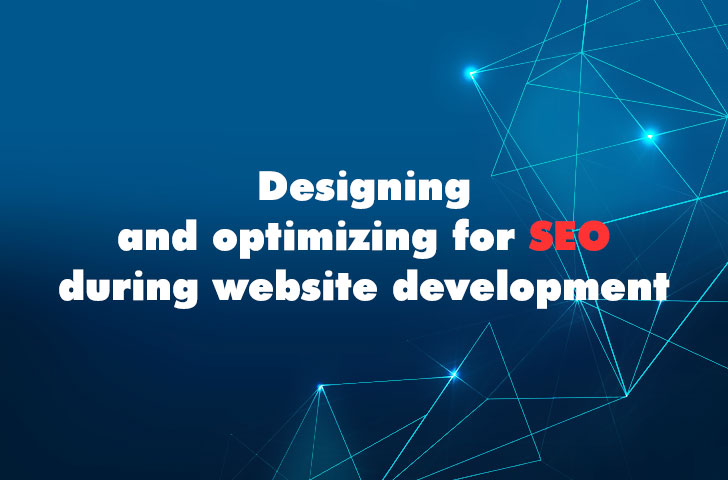Web design and SEO optimization during the website development process
- Viet SEO Defines SEO-Friendly Web Design
- Why Is SEO-Friendly Web Design Important?
- 6 Essential Factors for SEO-Friendly Web Design
- 1. Mobile-Friendliness
- 2. Readability Optimization
- 3. Image Optimization
- 4. Internal Linking Strategy
- 5. SEO-Friendly URL Structure
- 6. Optimizing Meta Tags (Title & Description)
- Conclusion
Viet SEO Defines SEO-Friendly Web Design
SEO-friendly web design is the process of building and developing a website that is not only visually appealing but also optimized for search engines. This includes improving page load speed, creating SEO-friendly URLs, ensuring mobile compatibility, and optimizing content according to SEO best practices. For businesses targeting the Vietnamese market, choosing a provider like Viet SEO services, which specializes in SEO-friendly web design in Vietnam, can help ensure your site meets both local user expectations and global SEO standards.
An SEO-friendly website helps businesses:
- Increase visibility on Google – Improve rankings on search engines.
- Enhance user experience (UX) – Easy navigation, readable content, and fast-loading pages.
- Optimize conversion rates (CRO - Conversion Rate Optimization) – Make it easier for visitors to take desired actions (purchase, sign up, contact, etc.).
- Reduce advertising costs – A well-optimized website lowers reliance on paid ads like Google Ads.
Why Is SEO-Friendly Web Design Important?
While SEO helps a website appear on Google, poor design can drive visitors away. This increases the bounce rate, which may negatively impact Google’s evaluation of your site. VietSEO agency emphasizes the importance of balancing effective SEO with user-friendly design to ensure lasting online success.
4 Key Benefits of Combining Web Design and SEO
1. Attracting High-Quality Traffic
Users tend to click on search results that appear on Google’s first page. An SEO-friendly website helps you:
- Rank higher with well-optimized content.
- Attract the right audience with real needs.
- Keep users engaged longer, boosting conversion rates.
2. Improving Organic Traffic
According to research by Ignite Visibility, 91% of users never go past the first page of search results. If your website isn’t ranking well, you’re missing out on potential customers.
An SEO-optimized website helps:
- Improve user experience, keeping visitors on your site longer.
- Increase Click-Through Rate (CTR) with compelling headlines and descriptions.
- Enhance page speed for a smoother browsing experience.
3. Enhancing User Experience (UX)
A well-designed, SEO-friendly website makes navigation and content consumption easy. Google values websites that offer a great user experience, leading to better rankings.
Studies show that every $1 invested in UX design yields a $100 return. Thus, investing in web design not only benefits SEO but also brings long-term business advantages.
4. Reducing Marketing Costs
SEO is a long-term strategy that, when effective, provides free, ongoing traffic without the need for constant ad spending. An SEO-optimized website can:
- Lower advertising costs by improving quality scores.
- Increase ROI through consistent organic traffic.
- Create a strong foundation for other marketing strategies.
6 Essential Factors for SEO-Friendly Web Design
Google uses over 200 factors to rank websites, but if you're just starting out, Viet SEO recommends focusing on these six core elements:
1. Mobile-Friendliness
Google prioritizes websites that are optimized for mobile devices. Over 55% of internet traffic comes from mobile users, and this number is growing.
📌 Solutions:
- Implement a responsive design that adapts to different screen sizes.
- Optimize mobile page load speed.
- Check mobile-friendliness with Google’s Mobile-Friendly Test.
2. Readability Optimization
Readable content allows users to absorb information quickly. A website with clear fonts, proper spacing, and well-structured text increases engagement.
📌 Solutions:
- Use easy-to-read fonts (e.g., Sans-serif, Roboto, Open Sans).
- Avoid excessive use of uppercase or italicized text.
- Maintain proper line spacing between paragraphs.
3. Image Optimization
Images enhance website appeal, but if not optimized, they can slow down page speed.
📌 Solutions:
- Use descriptive filenames with keywords (e.g.,
seo-friendly-web-design.jpg). - Add alt text to help Google understand image content.
- Compress images before uploading (use tools like TinyPNG or CompressJPEG).
4. Internal Linking Strategy
Internal links help users find important content easily and assist Google in understanding your site structure.
📌 Solutions:
- Use a clear navigation menu.
- Link to related articles within content.
- Minimize the number of clicks needed to reach key pages.
5. SEO-Friendly URL Structure
Short, clear URLs help both Google and users understand your page content.
📌 Solutions:
- Use static URLs with keywords (e.g.,
example.com/seo-friendly-web-design). - Avoid special characters or random numbers in URLs.
6. Optimizing Meta Tags (Title & Description)
Title tags and meta descriptions influence Click-Through Rates (CTR) on Google search results.
📌 Solutions:
- Keep titles under 60 characters and include primary keywords.
- Keep descriptions under 160 characters, making them compelling and concise.
Conclusion
SEO-friendly web design not only enhances your website’s appearance but also improves its search rankings on Google. By focusing on these six key factors, you can boost rankings, increase traffic, and enhance user experience. The VietSEO team is ready to help you start optimizing today and take your website to the top of Google!



